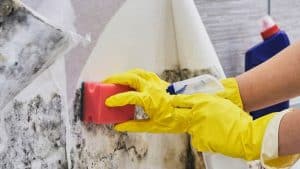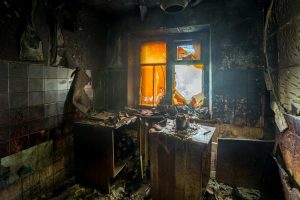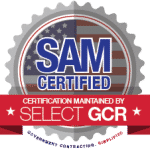There is nothing as frustrating as having water damage in your home or business. Water has the oxymoronic capability to both heal and destroy and when it destroys, the effects can be catastrophic. Not only can water damage any kind of material, but it can also pose health risks if it is unaddressed for too long. Sometimes, water damage can be mild and possibly handled by the property owner and it can also be extensive. It is usually best to have a professional handle any kind of water damage restoration, small or large. Water damage restoration is complex and can include other kinds of restoration in addition to being confusing and risky at times. Water damage is usually not an event that occurs often at your property and the process may be unfamiliar. While every water damage restoration will differ, there are many things that can be expected.
Categorize & Classify
Classifying and categorizing water damage is an important initial step to beginning a water damage restoration. It’s an easy way to organize the job and dictates what methods and equipment should be used. Though every water damage restoration is unique, the same classes and categories are used. In rating a water loss event, insurance companies typically use three different categories. These categories are important because they could affect the type of coverage from an insurance company. But even more importantly, these categories are divided by the level of contaminants, and represent different levels of health risk. In a water loss event, classes are used to designate the amount of water involved, the size of area affected, and the type of material affected. These variables determine the length of dry out and amount of equipment needed to perform a water damage cleanup.
Inspection
Determining the cause of damage, and the items that have been damaged by the water is imperative to the correction of your property. The inspection will ensure that these are determined, and necessary repairs made. The inspection will then be done for the roof, floor, and walls. The use of inspection devices like moisture sensors and meters can be a helpful metric. The water damage restoration specialist should be communicative and inform about what needs to be done. Sometimes, electricity can also be in jeopardy and it would be necessary to have it turned off.
Eliminating Standing Water
There are usually two parts to a water damage restoration, water mitigation and water restoration. Mitigation focuses on the immediate issues such as water extraction and sorting through items. Restoration deals with the rebuilding of damaged materials. Eliminating standing water is critical to the process so that restoration can be completed. It will also help in determining the source of the damage, like leaking water pipe. Removing standing water will also create an ideal environment to initiate the repair process.
Eliminating Further Damage
When water is left unattended in the property, it may lead to more damage. To avoid such, it would be ideal if the source of damage is not only identified but also eliminated. It can be a leaking pipe or other possibly hidden source that will need to be corrected in order to complete the process. Leaking water may have also caused damages to some other structural components of the house like floor, ceilings, or wall. These affected parts should be inspected and removed to avoid further damages as well.
Drying
After the removal of the damaged parts, the next most important step is to initiate drying. Drying ensures that excess moisture is eliminated from the property and discourages the growth of mold or other further structural damages. Using industrial and specialized equipment such as fans, dehumidifiers and heaters are typically used to eliminate moisture from all affected areas. Removing baseboards and lifting carpets may also be necessary to ensure that all the moisture is eliminated.
Monitoring And Completion
Monitoring the drying progress is necessary to ensure that the house has returned to its initial dry state condition. The water damage restoration expert will likely use meters to test moisture content in the room. The process can take a day or more, depending on the extent of the damage. Once the process is complete, the meters will be removed. Air quality may also be tested to be sure that mold is not present or if any existing mold had developed, it has been eliminated effectively.
Repair Of Related Damages
Water damage can easily spread to other areas such as floors, ceiling, and walls. Every square inch of your home or business will need to carefully inspected to ensure no detail is missed. Reconstruction will take place once the initial water mitigation has been successfully completed. This can include rebuilding or improvement of structure.
No matter whether your water damage restoration is small or large, enlisting a professional water damage restoration company can be a huge and comforting presence in getting your life back to normal after a water damage event.
For more info or to schedule a consultation contact us today at 800.922.4410




